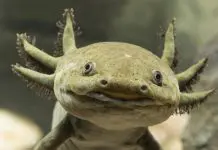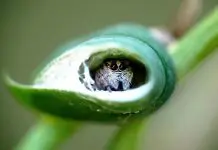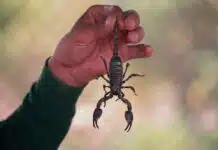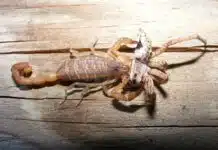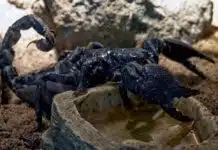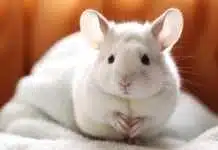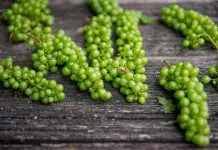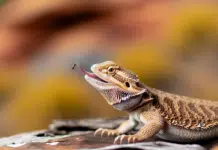The Amazing World of Hermit Crabs
Hermit crabs are far from your typical pet. These curious creatures have a unique trait that sets them apart from other crustaceans—they use shells as their homes. They are so attached to their shells that they will even fight to the death to keep them!
Hermit crabs are fascinating and complex animals, and they have intrigued scientists for years. In this article, we’ll delve into the world of hermit crabs and explore where their homes, or shells, come from.
Shells: The Home Sweet Home for Hermit Crabs
Hermit crabs prefer to live in a shell because it provides them with the protection and comfort they need. A shell protects the crab’s soft body from predators and harsh weather conditions while also providing a cozy home.
However, not all shells are suitable for hermit crabs; they must find a shell that fits them perfectly. The search for the perfect shell is an essential activity in a hermit crab’s life.
They frequently change their shells as they grow because it’s necessary to find one that fits comfortably over their bodies. As hermit crabs grow larger over time, some species may even move into several different shells throughout their lifetime.
The Origin of Hermit Crab Shells
Have you ever wondered where hermit crab shells come from? The answer may surprise you!
Most people assume that these creatures use dead seashells found on beaches or in shallow waters; however, there are many more sources of hermit crab shells. Natural sources of hermit crab shells include abandoned snail and clamshells left behind after predators consume these creatures’ flesh or when snails outgrow their shell’s size and need new ones.
Surprisingly, coconut husks can also serve as homes for these crustaceans! In addition to natural sources, humans also provide an abundant supply of shells through activities such as beachcombing and shell collecting.
This article has only touched the surface of the complex world of hermit crabs. These animals are fascinating in every aspect, from their feeding habits to their unique social structures.
In the following sections, we will explore further into where hermit crab shells come from and their myriad sources. Strap yourself in for a wild ride into the fantastic world of these curious creatures!
The Natural Sources of Hermit Crab Shells
Seashells found in the ocean and how they become available for hermit crabs to use as homes
Hermit crabs have the unique trait of using shells as their home. But, where do these shells come from?
These shells actually come from various sources. The most common source of these shells is the ocean.
Seashells are scattered on the ocean floor, washed up onto beaches and shores, and provided by other sea creatures who molt their own outer shell. Seashells can be sourced from different types of mollusks that live in the water.
They include gastropods (snails), bivalves (clams), cephalopods (squids, octopus) among others. The shells can also be found in different shapes and sizes which ultimately influence what type of shell a specific hermit crab will choose.
Explanation on how hermit crabs select and modify these shells to fit their needs
Hermit crabs must locate unoccupied seashells to use as homes because they lack the ability to produce their own shell. When locating new shelter, they will explore several empty seashells before selecting one that is suitable for them according to size, shape, weight, color and other factors. Once they have chosen a shell that fits them well, it’s not uncommon for hermit crabs to modify or decorate the chosen shell to make it more comfortable or appealing aesthetically.
This is done by altering the inside of the shell with its claws or manipulating materials such as sand grains or sponges with its legs. Modifying a new home can take anywhere from hours up to weeks depending on how much work needs to be done in order for it to suit their needs fully. Their modifications are necessary since these creatures need enough space within the shell in order to spin around and to hold their claws, legs, and abdomen inside.
Human-made Sources of Hermit Crab Shells
Shelling, Collecting, and Trading
Humans have been collecting seashells for centuries as decorative items, jewelry and even currency. This has led to an increase in demand for shells, which has resulted in the depletion of natural sources of seashells. Beachcombing is a popular activity among tourists and locals alike.
While it can be a fun pastime, beachcombing can also have negative effects on the ecosystem. Every time someone picks up a shell from the beach, they are taking away a potential home for a hermit crab.
This can lead to a scarcity of appropriate shells and force hermit crabs to use unsuitable shells that may hinder their growth or survival. In addition to beachcombing, commercial shelling is another human-made source of hermit crab shells.
In some parts of the world, people make a living by harvesting seashells specifically for the purpose of selling them as handicrafts or for use in construction materials. Some countries even have entire industries built around shelling and shell trade.
The Ethical Concerns Surrounding Human Interference with Natural Ecosystems
The impact that humans have on natural ecosystems extends beyond simply depleting natural sources of hermit crab shells. Overfishing and pollution are two major issues that also affect these creatures’ lives – not only directly through pollution harming their health but also indirectly by disrupting their food supply.
There’s also an ethical concern when it comes to exploiting natural resources without thought about how they might impact local ecology or endanger certain species like hermit crabs who depend on those resources as part of their habitat. Moreover, while it’s true that humans’ interference with nature has led to new homes made from more durable materials such as coconut husks or bamboo tubes which could be seen as beneficial adaptations, it still stands that natural ecosystems should be preserved so as not to disturb the delicate balance of nature.
While it’s true that humans have unintentionally caused problems for hermit crabs by depleting natural sources of shells and other resources they rely on, there are alternatives out there which can help them to thrive. We can reduce our ecological footprint by avoiding beachcombing and encouraging their protection.
We can also try to find sustainable ways of harvesting resources so we don’t end up harming the creatures who depend on these resources. Ultimately, while we may not be perfect at managing our impact on the environment, we can work towards reducing our negative impact so that future generations can enjoy the beauty and wonder of nature as much as we do now.
Unusual Sources of Hermit Crab Shells
The Resourceful Hermit Crab
Hermit crabs are fascinating creatures that have adapted to living on land while carrying their homes on their backs. These resourceful creatures have learned to use shells from the ocean as makeshift homes to protect them from predators and harsh weather conditions.
However, hermit crabs are not limited to using shells from the ocean. They have also shown remarkable ingenuity in finding alternative sources for their homes.
Coconut Shells
In tropical areas, hermit crabs can be found living in coconut shells. The hard exterior of the coconut provides protection from predators, while the softer inner flesh serves as a comfy bed for the crab. Coconut shells are readily available in these regions and provide a sustainable source of housing for hermit crabs.
Bamboo Tubes
In some parts of Asia, hermit crabs can be found living in bamboo tubes. These tubes provide a sturdy structure for their homes and are often lined with soft materials such as moss or leaves for added comfort. Bamboo tubes offer an environmentally friendly alternative to traditional plastic containers used as habitats for pet hermit crabs.
Discarded Bottles
Unfortunately, humans have created an abundance of waste that has had negative impacts on our environment. However, some hermit crabs have found a way to take advantage of this problem by using discarded bottles as homes. In Thailand, beachcombers have reported seeing hermit crabs living inside discarded glass bottles washed up on shorelines.
Innovative Adaptation Skills
Hermit crab’s ability to adapt and use unconventional sources shows how they can survive even when faced with environmental changes or shortages of traditional resources such as seashells. These innovative adaptations allow them to live comfortably in a variety of environments, from tropical regions to urban areas.
Conclusion
Hermit crabs have an amazing ability to use what is available to them to survive. Their use of unconventional sources like coconut shells, bamboo tubes, and even discarded bottles highlight their resourcefulness and adaptation skills. As humans continue to impact the environment, it is important that we learn from these amazing creatures and find ways to reduce waste and protect our natural resources.
Conclusion
Recap on the Various Sources Where Hermit Crab Shells Come From
Hermit crabs are fascinating creatures that have evolved to use shells as their homes. These shells can come from many different sources, including natural ones like mollusk shells and human-made sources like discarded bottles.
Through this article, we explored the various places where hermit crab shells come from and how they modify them to fit their needs. Hermit crabs are known for living in shells that are often too small for them.
As such, they must constantly seek out new homes to accommodate their growing bodies. They carefully select their homes based on factors such as size, weight, and texture.
Natural seashells provide a variety of options for these resourceful creatures. Furthermore, humans have impacted the availability of seashells through activities like shell collecting and beachcombing.
This has led to a decrease in the diversity of available shells for hermit crabs to use. However, hermit crabs have adapted by finding alternative sources for their homes.
Final Thoughts on Why It’s Important to Understand This Aspect of Hermit Crab Behavior
Understanding where hermit crab shells come from is important because it sheds light on a unique aspect of animal behavior. It also highlights the delicate balance between humans and nature.
By learning about the various sources of hermit crab shells, we gain an appreciation for these fascinating creatures and their resourcefulness in finding shelter. Furthermore, we become aware of our own impact on natural ecosystems and how it affects other living beings.
Overall, studying the behavior of animals like hermit crabs can inspire us to be more mindful about our relationship with nature and encourage us to take steps towards sustainability. It’s important that we continue to learn about these amazing creatures so that we can protect them and their habitats for future generations to enjoy.

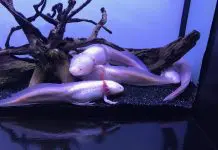
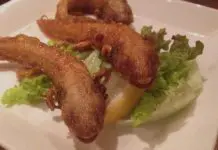
![Sick Axolotl, Fungus, Stress Symptoms [Axolotl Illness Guide 2025] Axolotl fungus](https://exopetguides.com/wp-content/uploads/2018/06/axolotl-218x150.jpg.webp)
